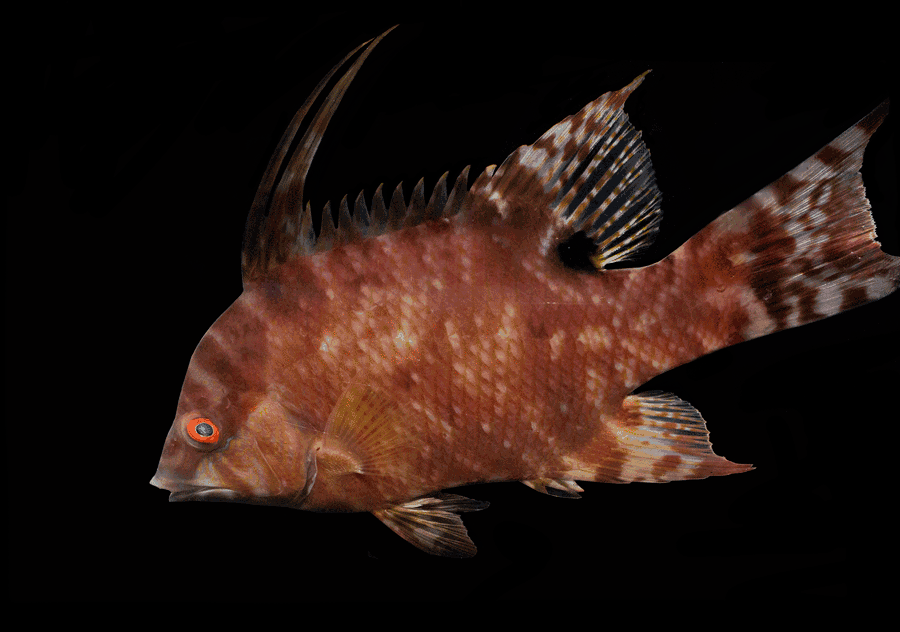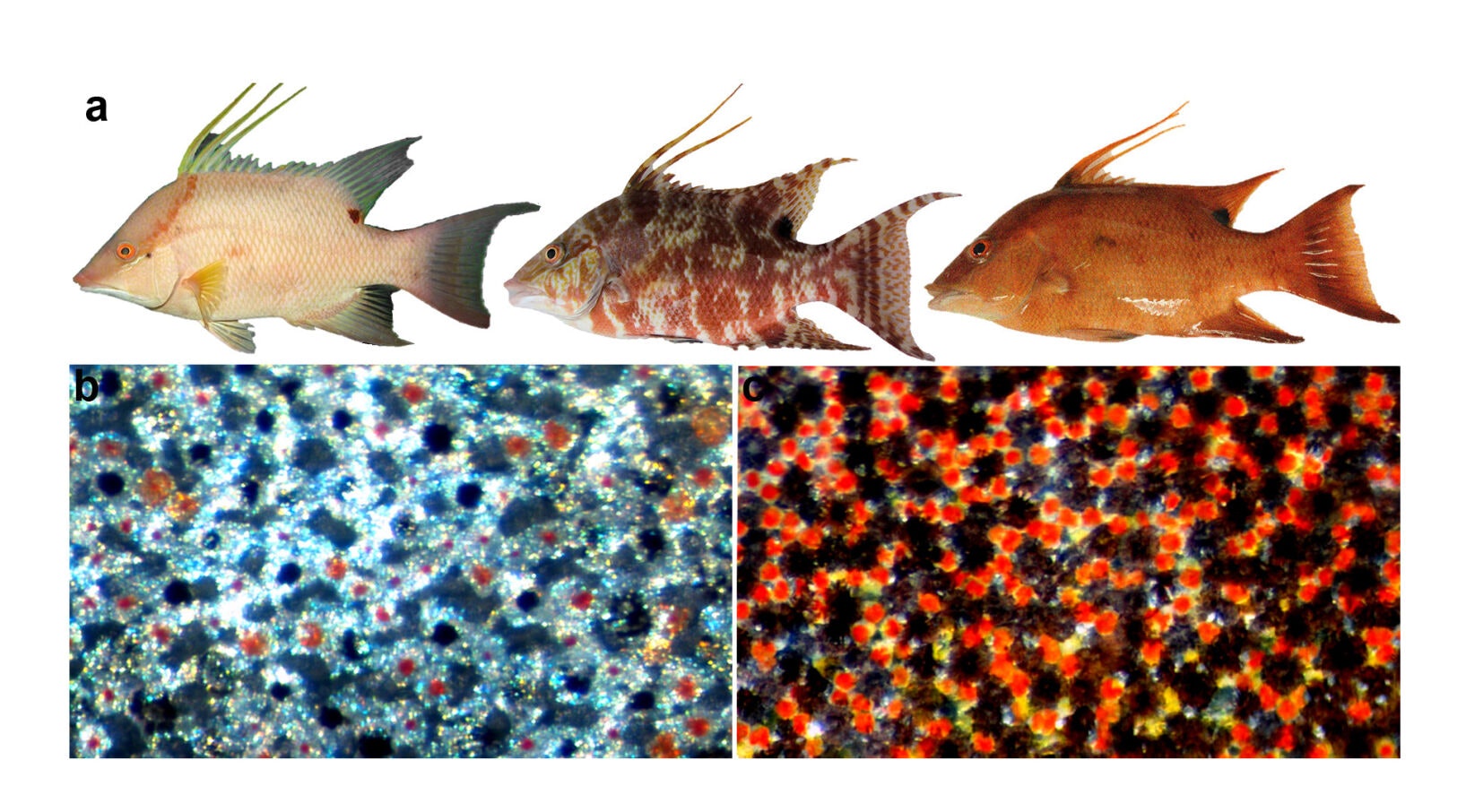
We’ve long marveled at color-changing critters like squid, chameleons, cuttlefish, and others as they flash brilliant hues. Animals across species possess this ability for a suite of reasons, including temperature adaptation, mate attraction, and camouflage. But the mechanisms through which they shift their pigmentations are still somewhat of a mystery. Now, researchers have identified a crucial cell involved that might reveal whether the creatures are aware — or even in control — of the color-changing process.
The scientists published their new paper today in the journal Nature Communications.
Under the Skin
The team discovered a set of specialized photoreceptors, or light-detecting cells, hiding underneath the hogfish’s color-changing cells (called chromatophores). They found these cells using transmission electron microscopy that rendered the cellular structure of hogfish skin, revealing these specialized cells.
In hogfishes, moving pigment in their chromatophores can reveal or conceal white tissue, which they change for socializing or camouflage. Right now, the researchers strongly suspect that these photoreceptors detect light filtered through whatever color the chromatophores are, which is how they perceive a color change.

A prior study demonstrated that hogfishes can detect blue light with a sensor in their skin. Since they live in a world of blue under the sea, researchers initially thought that this sensor would be superficial. But the novelty is that the receptor is actually buried underneath the chromatophores, detecting their changes. In a process known as sensory feedback, the photoreceptors register these changes to let the hogfish know what color it is.
“We think they're watching the chromatophores’ color change and then telling the skin or the brain of the animal, ‘Yes, you are the color you should be,’ or ‘You are not,’” first author Lorian Schweikert, assistant professor of marine biology at the University of North Carolina Wilmington, tells Inverse.

Changing colors to survive
Knowing how you appear to others, especially predators, is critical to survival. This is true even in our everyday life. Appearance matters. Imagine you need to dress for an event. You would want a mirror so you know if you are getting your fit right. Hogfish also need to know how they look.
“For these animals, that's a life or death outcome because they're using color change for camouflage or regulation and other processes,” Schweikert says.
But she says while we’ve known about the light-detecting mechanisms in animals’ skin, we still don’t know why it is there. Understanding the mechanisms through which this skill works can also help scientists figure out how it evolved in the first place, Schweikert tells Inverse.
Is everyone doing it?
This hogfish discovery may be the entry point for other color-changing animals. Schweikert tells Inverse it’s “very possible” that other animals use the same hidden photoreceptors, and it might not just be to change color. For example, she thinks it might also be used in bioluminescence, where living organisms, often predators, produce light to blend in and fool their prey. These animals “might be watching their own glow,” Schweikert says.







